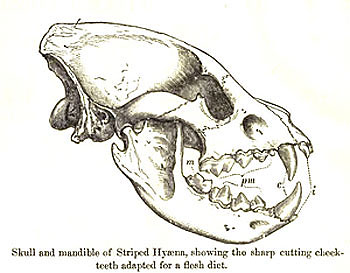A while back my colleague Jim Frost wrote about applying statistics to decisions typically left to expert judgment; I was reminded of his post this week when I came across a new research study that takes a statistical technique commonly used in one discipline, and applies it in a new way.
|
ADVERTISEMENT |
The study, by paleontologist Zhijie Jack Tseng, looked at how the skulls of bone-cracking carnivores—modern-day hyenas—evolved. They may look like dogs, but hyenas in fact are more closely related to cats. However, some extinct dog species had skulls much like a hyena’s.

Tseng analyzed data from 3D computer models of theoretical skulls, along with those of existing species, to test the hypotheses that specialized bone-cracking hyenas and dogs evolved similar skulls with similar biting capabilities, and that the adaptations are optimized from an engineering perspective.
…
Add new comment